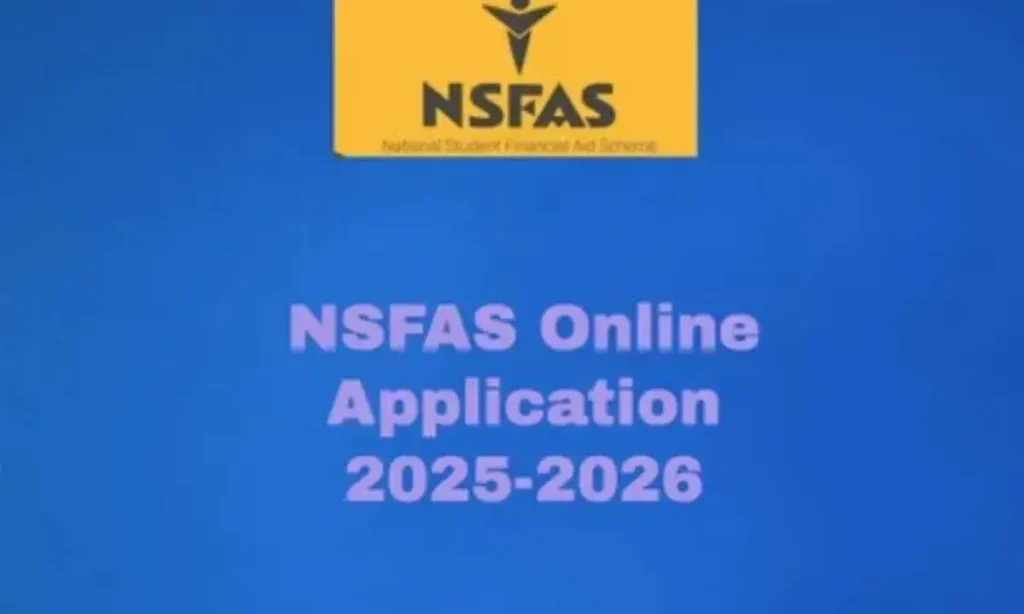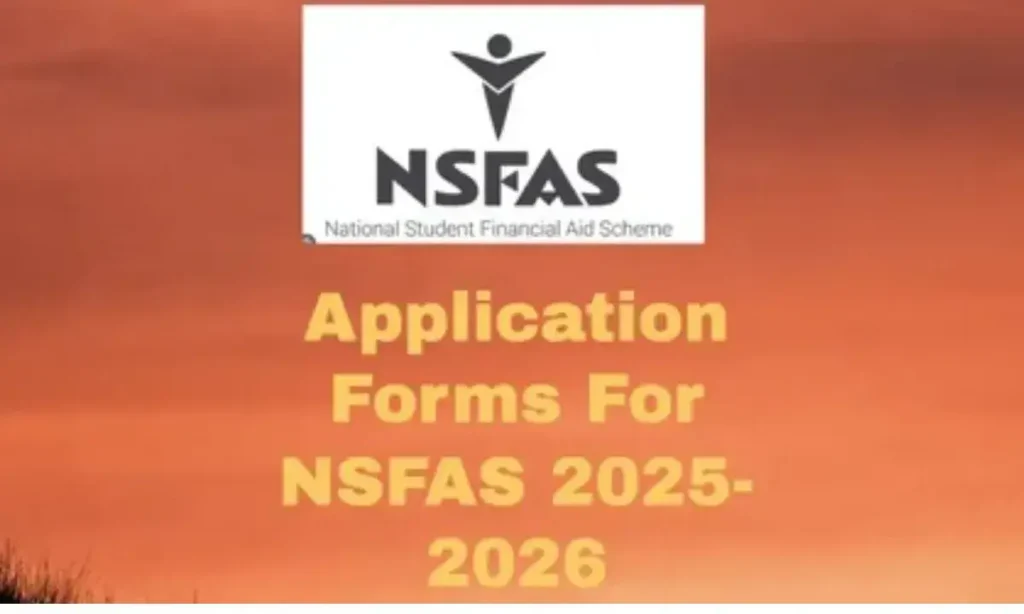The National Student Financial Aid Scheme (NSFAS) continues to be the lifeline for thousands of South African students seeking access to higher education. As we approach the 2026 academic year, understanding the NSFAS application dates, requirements, and allowances becomes essential for anyone hoping to secure funding.
This detailed guide covers NSFAS application dates 2026, the online application process, documents needed, allowances for both university and TVET students, eligibility updates, and everything else you must know to maximize your chances of success.
Table of Contents
NSFAS Application Dates 2026
Knowing the key application deadlines can make the difference between securing funding and missing out. NSFAS applications generally open in September of the previous year and close at the end of January of the academic year.
For the 2026 intake:
| Phase | Date | Notes |
|---|---|---|
| Opening Date | 1 September 2025 | Applications open on the official NSFAS portal |
| Closing Date | 31 January 2026 | Late submissions are not considered |
| Second Semester 2025 Applications | 9 July – 26 July 2025 | Limited to students starting mid-year |
⚠️ Tip: Apply as early as possible. NSFAS often experiences heavy traffic near the closing date, leading to delays and upload issues.
NSFAS Second Semester Application 2025
Not all students begin their studies at the start of the academic year. The second semester application is designed for those enrolling mid-year.
- Window: 9 July – 26 July 2025
- Who can apply:
- New students starting courses in the second semester of 2025
- Students who were not previously funded but now meet the eligibility requirements
Remember, this is not a “catch-up” window for those who missed the main deadline. It strictly applies to mid-year entrants.
How to Apply for NSFAS Online 2026
The NSFAS online application process is straightforward but requires attention to detail. Every step matters, from creating your account to uploading documents.
Step-by-Step Process
- Visit the official NSFAS website: www.nsfas.org.za.
- Create a MyNSFAS account:
- Go to my.nsfas.org.za
- Register with your ID number, email, and phone number
- Create a secure password
- Login and start your application:
- Fill in personal details (ID, name, contact)
- Provide academic details (Grade 12 results, institution, course)
- Add household income details
- Upload required documents (see next section).
- Submit and confirm your application.
- Track your status through your MyNSFAS account.
✅ Pro Tip: Double-check all personal information before submitting. Incorrect details can delay your approval.
Required Documents for NSFAS 2026
Missing or incorrect documents are the number one reason for application rejection. Ensure you prepare everything in advance.
Documents Needed
- South African ID document (ID book, smart card, or birth certificate if under 16)
- Parent/guardian ID copies
- Proof of income (latest payslips, UIF slips, or affidavit if unemployed)
- Proof of SASSA grants (if applicable)
- Death certificates (if parents are deceased)
- Disability Annexure A form (if applying under disability allowance)
- Latest academic results or matric certificate
📌 Household income threshold:
- R350,000 per annum (general applicants)
- R600,000 per annum (for students with disabilities)
NSFAS 2026 Reapplication and Registration

Returning students may wonder if they need to apply again. Here’s the breakdown:
- No reapplication needed if:
- You were funded in 2025
- You meet academic progression requirements
- You remain at the same institution and course
- Reapplication required if:
- You switched institutions or courses
- You failed to meet the academic progression rule
- Your funding was previously canceled
Uploading Documents on NSFAS
Document uploads are often the most frustrating part of the process. Following the correct procedure helps avoid errors.
How to Upload
- Log into your MyNSFAS account
- Go to the Documents Upload section
- Select the document type (ID, income proof, etc.)
- Upload the file (PDF, PNG, or JPEG format, under 2MB)
- Click Submit and check the status
⚠️ Common Issues:
- Files too large → compress before uploading
- Wrong format → convert to PDF or JPEG
- Failed uploads → try using a different browser or device
How Long Does NSFAS Take to Respond?
Patience is key once you’ve applied. NSFAS typically takes 4 to 6 weeks to process applications, but delays are common.
Application Statuses Explained
- Submitted → Your application has been received
- Validation → Details checked with Home Affairs and other databases
- Evaluation → NSFAS assesses your eligibility
- Funding Eligibility → Income and institution checks
- Application in Progress → Still under review
- Approved → You are successfully funded
- Unsuccessful → You did not meet the requirements
📌 What to do if stuck on “Application in Progress”:
- Wait for system updates
- Check your documents are uploaded correctly
- Contact NSFAS helpline if no progress after 8 weeks
NSFAS Bursary Overview
NSFAS is not a loan. It is a bursary scheme that covers the cost of studying for eligible students. Unlike loans, you do not have to repay the funding once you complete your studies.
Benefits of NSFAS Bursary
- Tuition fees covered in full
- Registration fees paid directly to the institution
- Allowances for living, accommodation, books, and transport
NSFAS Allowances 2026
One of the most important aspects of NSFAS funding is the allowances provided to support daily living and study needs.
University Student Allowances 2026
| Allowance | Amount (Annual) |
|---|---|
| Living Allowance | R15,000 |
| Transport | R7,500 |
| Books & Learning Materials | R5,200 |
| Personal Care | R2,900 |
| Accommodation (varies) | Actual cost, capped per region |
TVET College Student Allowances 2025–2026
| Allowance | Amount (Annual) |
|---|---|
| Accommodation (Urban) | R24,000 |
| Accommodation (Peri-Urban) | R18,900 |
| Accommodation (Rural) | R15,750 |
| Transport | R7,350 |
| Personal Care | R2,900 |
What Does NSFAS Cover in 2026?
NSFAS covers more than just tuition. The scheme ensures students can afford to live and study without financial stress.
- Tuition fees (full coverage)
- Registration fees
- Accommodation (on-campus or approved private housing)
- Books and study materials
- Living allowance
- Transport allowance
- Personal care costs
NSFAS 2026 Updates and Eligibility
Every year NSFAS updates its funding policies. For 2026, keep an eye on:
- Income thresholds (R350,000 / R600,000 for disability)
- Academic progression rules (must pass at least 50% of modules)
- Funded courses → NSFAS only funds public universities and TVET colleges, not private institutions
- Device provision → NSFAS continues supporting students with laptops under special requests
Non-Eligible Applicants
Not everyone qualifies for NSFAS funding. Common non-eligible categories include:
- Students with household income above the threshold
- Foreign nationals
- Part-time students (unless in specific TVET programs)
- Students who already hold a diploma or degree
- Students registered at private institutions
Cancelling an NSFAS Application
If you made an error or wish to withdraw, you can cancel your NSFAS application.
Steps to Cancel
- Log into your MyNSFAS account
- Go to Application Status
- Select Cancel Application
- Confirm your choice
Note: Once canceled, you may need to wait until the next cycle to reapply.
Frequently Asked Questions (FAQs)
Is the 2026 NSFAS application open?
Yes. Applications open on 1 September 2025 and close on 31 January 2026.
What documents do I need for NSFAS?
ID, proof of income, parents’ documents, academic results, and other supporting documents depending on your situation.
How do I apply for NSFAS?
Apply online at www.nsfas.org.za through your MyNSFAS account.
Which courses are funded by NSFAS in 2026?
All accredited qualifications at public universities and TVET colleges. Private institutions are not funded.
How do I apply for NSFAS for the first time?
Register on my.nsfas.org.za, fill in your details, upload documents, and submit your application.
Can I apply for NSFAS using my phone?
Yes. Applications can be completed on smartphones with internet access.
What is the next step after “application in progress”?
Wait for NSFAS updates. If your documents are in order, your status should move to funding eligibility within weeks.
Conclusion
The NSFAS application process for 2026 is simple but requires careful planning. Knowing the opening and closing dates, preparing the correct documents, and understanding the allowances available can help you secure funding with minimal stress.
Always apply early, track your application, and keep an eye on official updates from NSFAS. With this guide, you’re better equipped to navigate the process and take a confident step toward your academic future.

